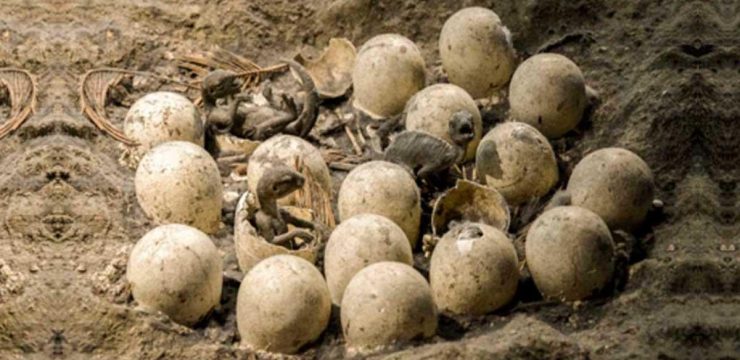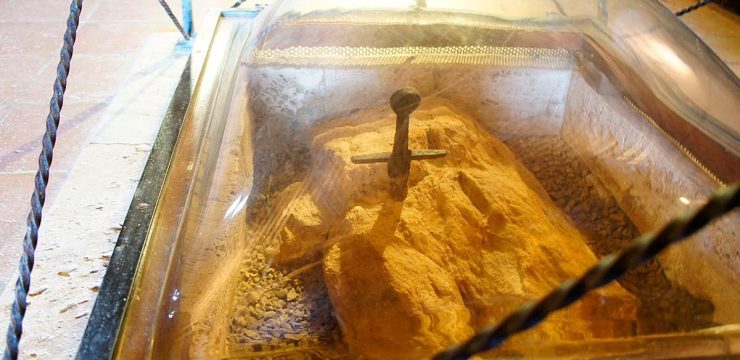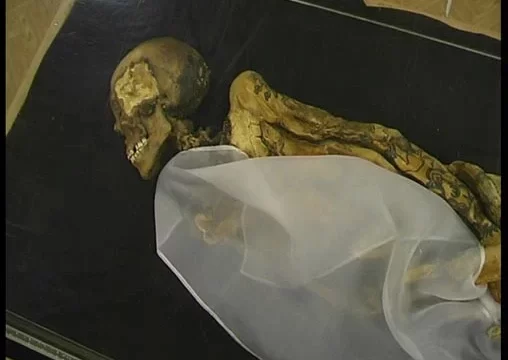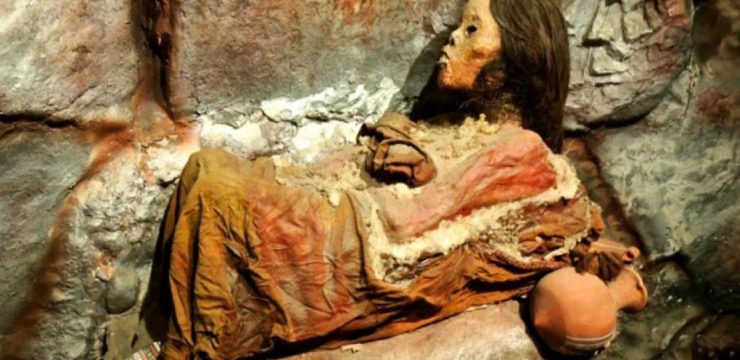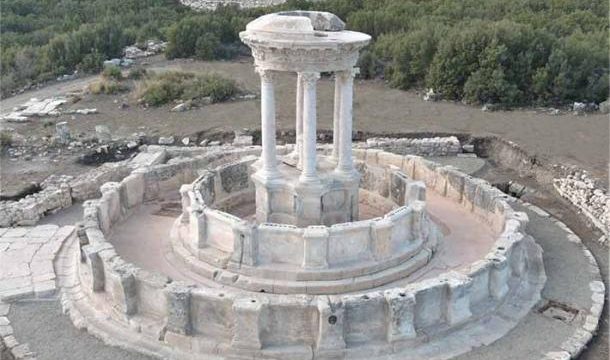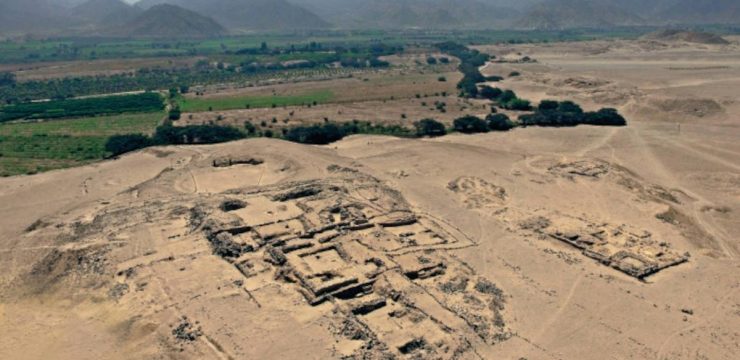Archaeologists have made a groundbreaking discovery in the Touran-Uyuk Valley of northern Tuva, Russia, a region often referred to as the “Siberian Valley of the Kings.” A collaborative Polish-Russian team has unearthed a massive burial mound dating back approximately 2,500 years, uncovering the remains of a woman buried alongside a stunning array of precious artifacts. This find has provided significant insights into the region’s history and culture while challenging traditional assumptions about Scythian burial practices.
Uncovering the Unexpected
The excavation, spearheaded by researchers from the Jagiellonian University in Kraków, revealed the skeleton of a woman estimated to have been about 50 years old at the time of her death. Among the most remarkable discoveries was a golden pectoral ornament in the shape of a crescent or sickle, an artifact traditionally associated with male burials in this cultural context.
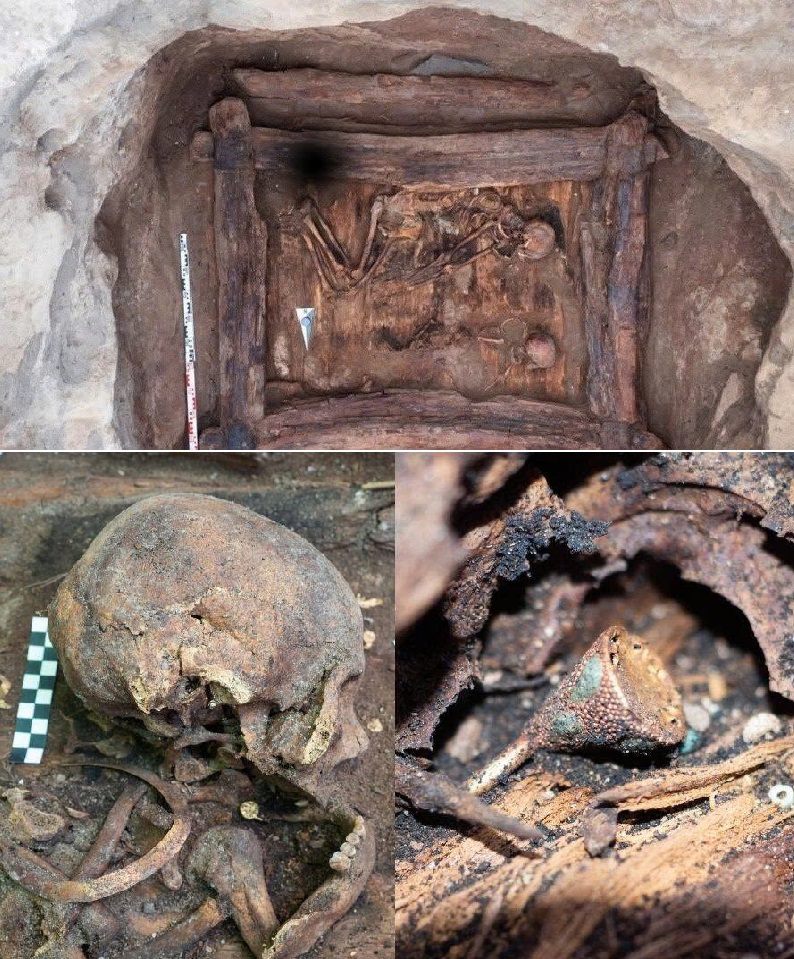
Dr. Łukasz Oleszczak, a key member of the research team, highlighted the profound significance of this discovery. “A particularly interesting artifact was a golden pectoral ornament, a decoration hung at the neck in the shape of a sickle or crescent. Such objects were almost exclusively discovered in the graves of men and were considered symbols of belonging to a social group, caste, perhaps warriors. Its presence in the grave of a woman is a very interesting deviation from this custom and certainly confirms the unique role of the deceased in the community of the Valley of the Kings,” he stated.
This finding suggests the woman held an exceptional status within her society, prompting new questions about the roles of women in Scythian culture and their contributions to their communities.
A Wealth of Treasures
The burial mound, measuring approximately 25 meters in diameter, was not only the final resting place of the woman but also contained the remains of a young child, estimated to have been 2 to 3 years old at the time of death. Additionally, the archaeologists unearthed an extraordinary collection of grave goods, including:
- Bronze mirrors
- Gold earrings
- An iron knife
- A well-preserved decorated wooden comb
In total, the ancient tomb contained the remains of five individuals, each buried with items reflecting their societal status and the customs of the time. The sheer wealth of artifacts recovered from this burial site underscores the importance of this discovery and its potential to illuminate the customs and beliefs of the Scythian people.
Harnessing Advanced Technology
The research team’s success in locating and excavating the burial mound was partly attributed to their use of cutting-edge technology. In 2021, the team employed “aerial laser scanning” to identify the presence of two graves at the site, allowing them to plan and execute their excavation with precision. This innovative approach demonstrates how modern technology can revolutionize archaeological research, enabling discoveries that might otherwise remain hidden beneath the surface.
The Scythian Legacy
The burial mound has been attributed to the Scythians, a nomadic people who dominated the steppes stretching from the Black Sea to China between roughly 800 B.C. and A.D. 300. Known for their sophisticated craftsmanship, elaborate burial practices, and formidable warrior culture, the Scythians played a crucial role in the history of the Eurasian steppes.
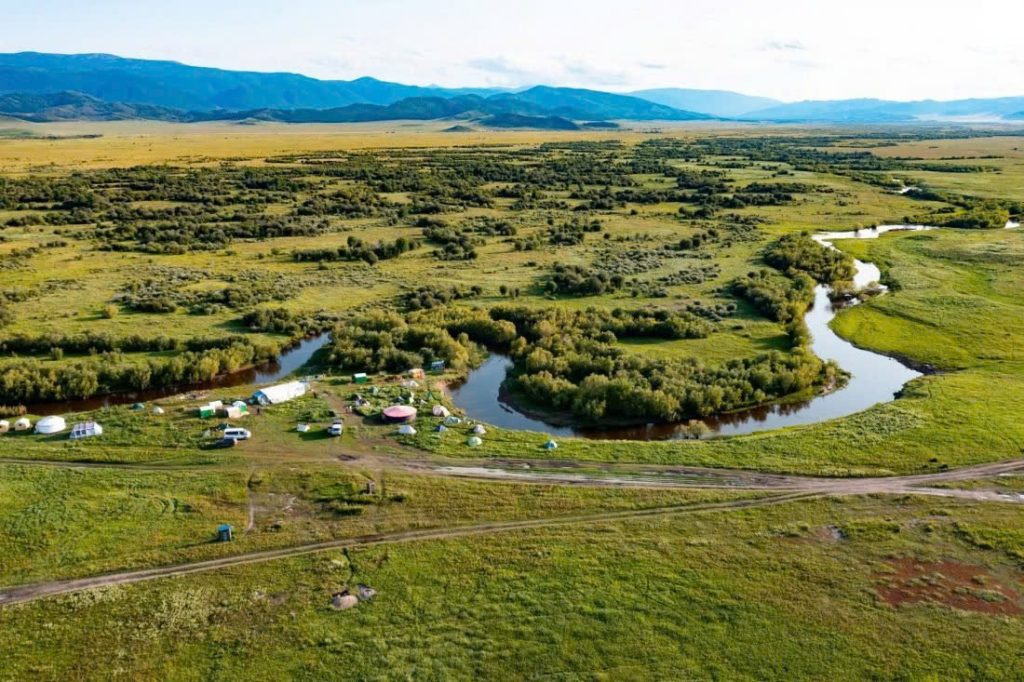
The woman’s burial, dating to the 6th century BCE, offers valuable insights into Scythian social structures and cultural practices. Dr. Oleszczak remarked on the high status of the deceased, stating, “It seems that, like the others buried in this barrow, she belonged to the prince’s entourage.” This interpretation suggests that the woman may have held a position of considerable influence within her community, perhaps as a leader, priestess, or other prominent figure.
Challenging Gender Norms in Ancient Societies
One of the most striking aspects of this discovery is its potential to challenge long-held assumptions about gender roles in Scythian society. The presence of a traditionally male-associated artifact in the woman’s grave raises intriguing questions about the social and cultural dynamics of the time. Could this signify a broader acceptance of diverse roles for women within Scythian communities, or does it reflect a unique exception to the norm?
The burial’s location within the “Valley of the Kings” further emphasizes its importance. This area, known for its richly adorned burial mounds, has long been associated with elite members of Scythian society. The discovery of a woman buried with such high-status artifacts suggests a more complex understanding of social hierarchy and gender roles within this ancient culture.
Broader Implications for Archaeological Research
This discovery is not only significant for its immediate findings but also for the broader implications it holds for the field of archaeology. By combining traditional excavation techniques with modern technology, researchers are uncovering new layers of historical knowledge and challenging preconceived notions about ancient societies. The findings from this burial mound contribute to a growing body of evidence that highlights the complexity and diversity of Scythian culture.
Moreover, the use of advanced technology, such as aerial laser scanning, underscores the importance of interdisciplinary approaches in archaeological research. By integrating tools from fields like engineering and computer science, archaeologists can enhance their ability to explore and interpret the past.
A Window into the Past
The discovery of the burial mound in the Touran-Uyuk Valley provides a rare glimpse into the lives and beliefs of the Scythians, a people whose legacy continues to captivate researchers and historians alike. The artifacts recovered from the site, ranging from exquisite gold jewelry to everyday items like wooden combs, paint a vivid picture of a society that valued both artistic expression and practical craftsmanship.
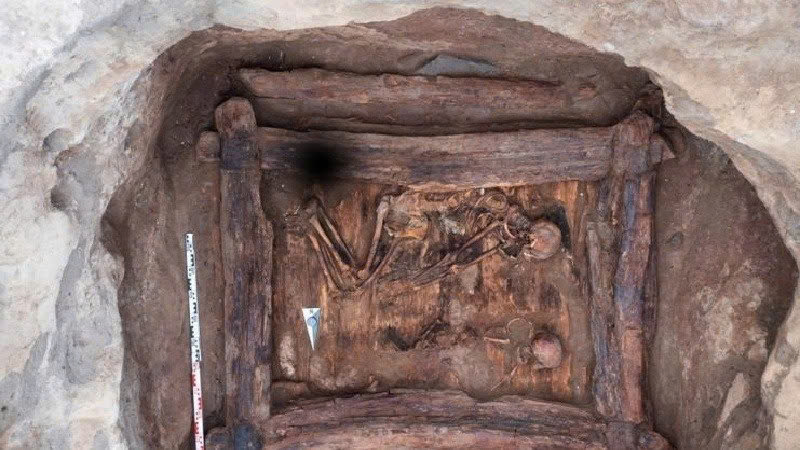
Perhaps most importantly, this find serves as a reminder of the dynamic and ever-evolving nature of history. Each new discovery has the potential to reshape our understanding of the past, offering fresh perspectives on the lives of those who came before us. For the researchers involved in this excavation, the journey is far from over. As they continue to analyze the artifacts and remains from the burial mound, they are poised to uncover even more insights into the fascinating world of the Scythians and their enduring influence on the history of the Eurasian steppes.
